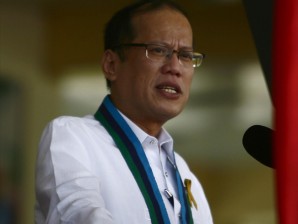Aquino issues guidelines on class suspensions
Announcements suspending classes and work in government offices in the morning due to weather disturbances should be made not later than 4:30 a.m. and not later than 11 a.m. for afternoon cancellations, President Benigno Aquino III said in an executive order released earlier this week.
According to Executive Secretary Paquito Ochoa Jr., Mr. Aquino’s Executive Order No. 66 also directs the Philippine Atmospheric, Geophysical and Astronomical Services Administration to provide critical weather forecasts for the next day not later than 10 p.m. and at 4:30 a.m. on the day when cancellation or suspension of classes and work seems likely.
Ochoa said the President also ordered Pagasa to issue the forecast not later than 11 a.m. on the day that suspension of classes and work in the afternoon would appear prudent.
“This presidential issuance is an assertion of the State’s declared policy to institutionalize measures that will ensure that the general public, including students and state workers, will be safe from needless hazards and that their lives and limbs will be safeguarded,” Ochoa said.
EO 66 set the following guidelines in the cancellation or suspension of classes in public and private schools and work in government:
Article continues after this advertisementSignal No. 1—Classes at the preschool level in the affected area shall be automatically cancelled or suspended.
Article continues after this advertisementSignal No. 2—Classes at the preschool, elementary and secondary levels in the affected area shall be automatically cancelled or suspended.
Signal No. 3—Classes at preschool, elementary, secondary and tertiary levels in the affected area, including at graduate schools, as well as work in all government offices, shall be automatically cancelled or suspended.
In the absence of typhoon warnings from Pagasa, EO 66 provides that local chief executives, particularly in flood-prone or high risk areas, shall implement localized cancellations or suspensions of classes and government work in coordination with Pagasa and the National Disaster Risk Reduction and Management Council.
EO 66 provides that in areas affected by disasters other than typhoons, classes in all levels in both public and private schools and government work shall only be cancelled or suspended upon the declaration by the President of a state of calamity on recommendation of the NDRRMC.
It added that the concerned local disaster risk reduction and management council office must then be responsible for the announcement of the suspension of classes and government work in the affected areas, in coordination with the NDRRMC.
EO 66 tasks the NDRRMC to immediately inform the President, through the Executive Secretary, of any or all cancellation or suspension of classes and government work in the affected areas.
President Aquino also ordered government agencies directly involved in disaster risk reduction and management to maintain the operations of their respective offices in times of disasters to ensure the continuity of the delivery of public service.
The EO said the heads of the concerned government agencies shall determine which of their respective divisions or units shall maintain their operations.
These government offices are the Office of the Executive Secretary, the Department of National Defense, the Department of the Interior and Local Government, the Department of Social Welfare and Development, the Department of Science and Technology, the Department of Health, the Department of Public Works and Highways, and the Department of Education and other offices whose operations the President or the NDRRMC may deem necessary to continue.
